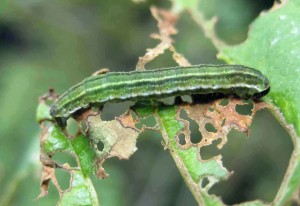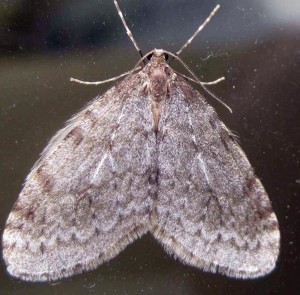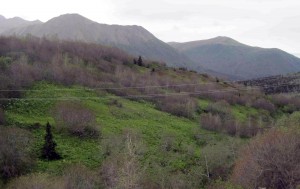Moth outbreak results in defoliation
August 9, 2011

907-474-5406
8/9/11
A widespread geometrid moth outbreak that has caused defoliation of berry crops, shrubs and trees on the Kenai Peninsula and Southcentral Alaska has spread as far north as Hatcher Pass this year.
Michael Rasy, statewide integrated pest management technician for the University of Alaska Fairbanks Cooperative Extension Service, said the outbreak was first reported in 2009 on the southern Kenai Peninsula. The most severely affected areas this year include Eagle River, around Summit Lake on the Kenai Peninsula, and near Homer and Seward, where hundreds of trees have been defoliated. The culprits have been identified as the Bruce spanworm and the autumnal moth, which are geometrid moths.

“There’s just nothing there,” he said. “Everything is brown and bare.”
In the Mat-Su area, willow, birch and high-elevation shrubs have been especially affected, and on the Kenai Peninsula and elsewhere, alder, berries and hardwood species have been damaged.
The defoliated plants look dead, but most will likely survive, said Rasy. Usually it takes several years of continuous defoliation to kill native deciduous trees, shrubs and berries. The damage is done early in the spring. Caterpillars chew on the leaves and complete their work by the end of June, before pupating in the soil. They reemerge during the fall to lay eggs that will hatch in the spring.
Rasy said the current outbreak should run its course in a few years. Areas on the southern Kenai should see a significant decrease in moth activity in the next year, but the northern Kenai Peninsula, Anchorage and Mat-Su Valley areas will likely have another year or so of heavy defoliation.
Watering plants and trees will aid survival. Certain berry crops and highly prized ornamental species may be sprayed with an insecticide beginning around the end of May, but timing is critical, Rasy said.

ADDITIONAL CONTACTS: Michael Rasy, statewide integrated pest management technician, at 786-6300 or via e-mail at anmwr@uaa.alaska.edu.
ON THE WEB: www.uaf.edu/ces
NOTE TO EDITORS: Photos are available for download at www.uafnews.com
DC/8-9-11/031-12


